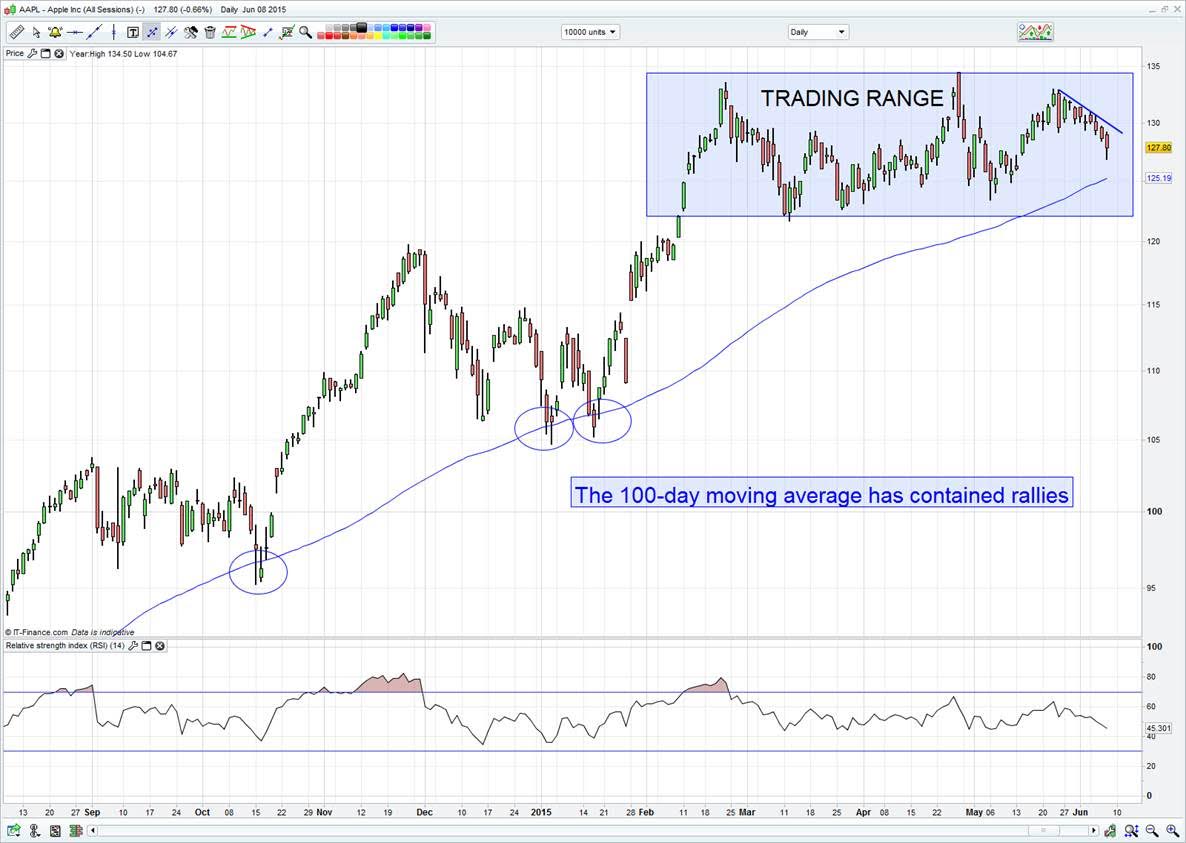With all the twists, turns and undercurrents in the global capital markets, I think this week could hold some important clues on how the land lies and the future direction for markets.
We know the Federal Reserve is data dependant, but so too are markets and it seems (in developed markets at least) that we need new news; a new catalyst. If central banks are waiting for the smaller pieces of the economic jigsaw to fall into place, then investors are likely to sit on their hands for now as well, waiting for news of central bank action or economic growth that encourages earnings estimate increases.
For now though, developed market central banks are playing the waiting game and therefore equity market volatility should be sold on momentary spikes. That being said, a number of markets are looking a touch more bearish from the technical side. Certainly the German DAX springs to mind, with the index entering a technical ‘correction’ of 10% since the mid-April peak, although the term ‘correction’ is overstated.
The falls in the DAX are a by-product of the moves in German bund complex and as yields move higher (as traders sell) in turn traders unwind short EUR FX hedges. This is having an impact on the equity market, which for a large period of time was also a by-product of a lower EUR – this should come into play again on the open with a stronger EUR seen today and therefore a weaker DAX.
The 25 May downtrend on the DAX comes in some 300 points higher, although the May lows around 11,200 will be a firm test this week and for trend followers this could be a compelling level to look at short positions. It seems for 11,200 to materialise though we will need to see EUR/USD lower, and amazingly the pair is now 40 pips above the pre-US payrolls level of $1.1290 and eyeing the top of the year’s range. Reports that Greece is showing increased signs of a compromise and a move away from pushing for debt forgiveness seem to be causing further EUR short covering, although there is still some way to go in the negotiations.

In the US, the S&P 500 is also starting to roll over somewhat, with the index trading through the 100-day moving average at 2,084. It must be said that the index is only 2.6% away from the all-time high so it’s hardly bearish, but still there are signs the S&P 500 could melt slowly lower this week. Structural leader Apple found modest buyers after the various announcements on the first day of the WWDC. One gets the impression that while these announcements will certainly enhance the Apple product suite and keep the momentum moving along fairly nicely, there is clearly no single announcement that is going to drive a major upgrade cycle from analysts and expectations were set accordingly.

Asian markets are showing no correlation to other global markets of late and have all done their own thing again today. The ASX 200 found buyers on the open, although this was always a risk given the strong underperformance of late. Still, the sellers moved in and proved the morning bounce was nothing more than a dead cat bounce and the trend lower continues. There just isn’t any strong catalysts for the Australian market and despite a strong business confidence report, the market is facing a slowing Chinese economy, constant headlines about a housing bubble, a lack of rebalancing in the domestic economy and ultimately falling earnings estimates. Selling rallies in SPI futures seems appropriate given the downtrend.
Staying in the antipodean markets, I think it is worth looking at the NZD in a more positive light this week. The swaps market are pricing in a 42% chance of a cut this week from the RBNZ and I see this as too high and the cash rate will be left unchanged. Of course, it’s never as simple as just looking at whether they cut or not, especially when the bank are likely to signal a cut (or two) is coming this year. Still, I would not be surprised to see AUD/NZD trading closer to NZD1.0700 by the end of the week, especially when Australian (April) housing data (if we look at the investors numbers) suggests we may need to see increased macroprudential tools.
China has fallen 2% today, although on any other day the 20 basis point drop in inflation to 1.2% and the 4.6% contraction in producer prices could have seen the Chinese markets up on stimulus bets. Still, that hasn’t been the case, although real yields have risen today and in turn the prospect of a benchmark interest cut. The bulk of clients have been buyers of Chinese mainland markets (CSI 300 and A50 cash) today, but the real risk comes tomorrow with the MSCI emerging market review at 07:00 AEST. The playbook here is so diverse that it is almost impossible to call but I hold a consensus view that China will not gain greater representation within the MSCI EM basket, so the risks tomorrow (in my opinion) if we take things at a very simplistic level are to the downside.